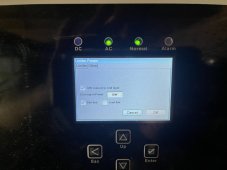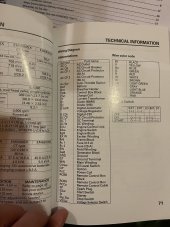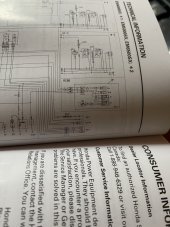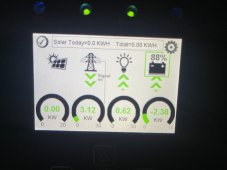Thanks! Hopefully I can figure something out for how absorption is programmed.Make "Equalize" voltage no higher than boost, so it does no harm.
1000A+ cranking capability, so no worry about peak amp draw (sustained, but I'm not sure lead-acid has any big problem with high current, just reduced capacity?)
5 hour 179 Ah indicates 36A draw is expected
Voltage you scribbled matches battery data sheet.
Battery capacity 460Ah? Data sheet says 460 minutes at 25A. 230Ah 20 hour rate. Do you have 2 strings? That would be 460 Ah.
"8x 230 amp 12V agm batteries" OK, so it is 460 Ah. That's correct too.
Neither battery data sheet or charger settings say how long to hold absorption voltage.
Try monitoring it, see what it does.
My SunXtender, the manual says hold absorption voltage until current drops to 0.005C, takes about 2 to 4 hours.
I’ll do some more digging but thanks for confirming my scratch marks








